HISTORY OF PASCO COUNTYCumpressco (Sumter County)A Place Called Cumpressco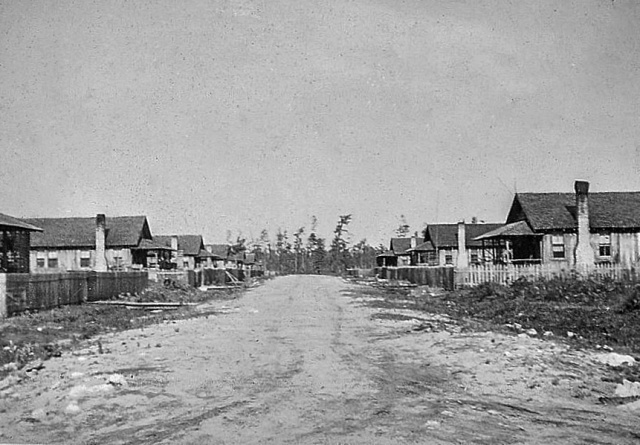 By NELL M. WOODCOCK This is a glance back to a place called Cumpressco that once existed in the 1920-40’s east of Dade City beyond River Road. At the end of River Road there was a dirt road, an iron bridge that spanned the Withlacoochee River, more dirt road then Cumpressco. And the swamps of east Pasco and Sumter Counties. This was a point of entry for Cummer Sons Cypress Company into Florida’s vast multi-county Green Swamp and its stands of virgin cypress trees. These particular stands on the winding Withlacoochee River were known as the “Cumpressco Group.” The logging operation at Cumpressco was a vital component of their sawmill located in the town of Lacoochee north of Dade City. Cummer built a railroad from the mill to the logging camp located just inside Sumter County. A narrow dirt road that paralleled the tracks was for company purposes only. The main public access to Cumpressco was from Dade City’s River Road. It was a hustling, bustling community then. Men with pile drivers and a crew of workers, built railroad tracks into the swamps to reach individual strands of cypress. Other men, sometimes in waist deep water, fell these trees with cross saws and axes. Skidder operators and their crew moved them to the railroad tracks while others loaded the logs on rail cars. Once a certain number of cars were filled, Cummer’s railroad engineers moved the train to the mill in Lacoochee. Ronald Stanley, who spends his time between Wesley Chapel and the mountains of North Carolina, remembers Cumpressco. On a summer vacation from school one year, his father Jesse Stanley, a key Cummer employee, put him to work on a logging train. Here’s Ronald’s story:
William Reeves Hyatt, Sr. (1895- 1967) was superintendent at Cumpressco then, Stanley recalled. Prior to that, Mr. Hyatt and his family had lived in Lacoochee where he was assigned to oversee the Black community. (See the Lacoochee Hyatts Story listed under Previous Stores.) In that story a daughter, Aldora Hyatt, states the move to Cumpressco in the mind of a 15-year-old, seemed to be about a millions miles away down a dirt road into a swamp… Like those in Lacoochee, Cumpressco had rows of segregated houses for Black and white employees. They had a commissary, doctor and doctor’s office, a Baptist Church and a school for Black students. White children were bused to Dade City schools. Cummer supplied electricity to the church and commissary, but residents used oil lamps in their homes, or relied on generators There are many men and women today in their 80’s and 90s who remember Cumpressco, including the writer, who is 86. Wilbur North, 96, of Jacksonville, recalled the rough, dangerous work required of laborers in the swamps. And horrible machinery related accidents when some men lost limbs miles away from immediate medical attention. And no medical insurance. His parents, Mack Dennie and Mary Leila Williams North, moved to Lacoochee in 1926, from White Springs, Florida. They had five boys. Mack, Tom, Hayes, L.C., Wilbur and Mark. And one girl, Keron North Tomlinson. The family moved to Cumpressco when Wilbur was a teenager. He attended school at St. Leo. Buddy Weeks, 80, of Winter Park, spent his childhood in Lacoochee where his father worked. He recalled staying with relatives in Cumpressco as a young boy. When shown a picture of the row houses, Buddy said,
Another couple he recalled was Craft and Bertie Bryant. Some of those houses were moved to Lacoochee after Cumpressco closed down. The last time he visited the site there still remained an old ‘work car’, a modified box car, used to transport workers, by rail, out to the work sites.
He described the multi-county Green Swamp area now controlled by the Southwest Florida Water Management District as a “recharge area” for the Floridian aquifer and the headwaters of the Withlacoochee, Hillsborough and Kissimmee rivers known as the “Pasco High.” Iva Bryant, 92, of Dade City, recalls an automobile jammed full of kids with furniture and other belongings piled onto a railroad car when her family move from Levy County to Cumpressco. 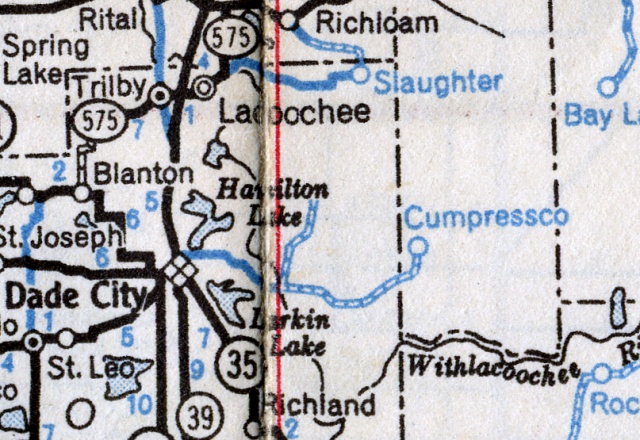 The Life of Iva Summer Bryant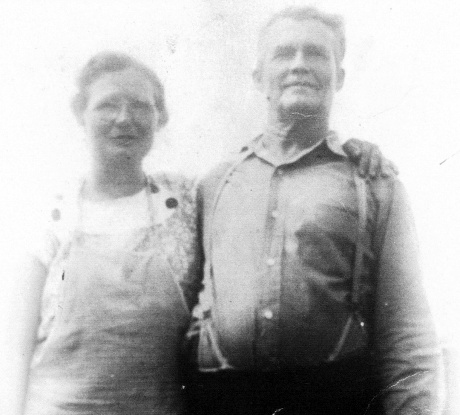 By SUSAN McMILLIAN While the rest of the country was beginning to roar in 1920, a baby girl was born on March 15 in a remote area near the town of Sumner in Levy County, Florida. Her parents, Jim and Mattie Summer, called her Iva. She was also born to four older brothers. Soon another baby brother joined the family, they called him J.W. In 1923 Mattie Summer died. It was the year of the Rosewood racial disaster. Times were difficult and her husband had to make a hard decision. Jim Summer was a fisherman at Cedar Key. It was impossible for him to make a living and take care of two small children. Another couple wanted to help so he give the 3-year-old Iva and baby brother J.W. to Jesse and Mattie Weeks. Jessie Weeks was a pile driver operator who worked at Otter Creek for the Cummer Company and other logging companies. He laid railroad tracks into swampy areas so they could reach the trees and haul logs to area sawmills. When the timber began to give out in that area, Jessie Weeks eventually moved his family to Rutland. While there, Iva attended school in Wildwood through the 8th grade. Here lifelong friendships were forged with three other girls whose parents worked for Cummer. The were sisters Maybelle and Vivian Knight, the daughters of Bert Knight; and another girl named Mazzley McPherson. Their parents would tell them about Cummer’s new town called Cumpressco soon to be their home. Mr. Weeks was already there with his pile driver working on the railroad bed that would connect Cumpressco to Cummer’s new sawmill complex in Lacoochee. The Seaboard Airline Railroad tracks and an agent’s station connected Lacoochee to Wildwood. Once the basic town of segregated row houses with a water tower and few other buildings were ready, Mrs. Weeks informed them they were moving. The company sent men to Rutland and they loaded their furniture and anything that wouldn’t fit into an automobile onto a railroad car. Then Mrs. Weeks loaded the children , J.W. Iva, her sister Coraine, twin sisters Kathline (Red) and Kathaine (Buck) and they left Rutland heading south. When they finally reached Dade City and turned east on River Road, they went five miles to the Withlacoochee River Bridge, and continued on 11 miles until they reached Cumpressco. They had also reached the Pasco-Sumter County line. The family settled into a wooden three bedroom house with water and toilet but no electricity. Oil lamps were used at night. The company furnished a Baptist Church, general store, and an office for a medical doctor named Harroll. Mrs. Weeks opened a boarding house where lunch and dinner were served. Iva dropped out of school and helped her mother. She remembers a young Black woman named Annie Belle Fort who worked in the kitchen. A school building was provided for the Black children. White children who chose to go to school attended those in Dade City. Eleanor Bryant Harris drove a homemade bus (a truck with benches) to transport students. She lived on River Road and had to rise early each morning and drive 13 miles to pick up Cumpressco students and on the return trip load the River Road students for their ride to school. One River Road resident that worked at Cumpressco was a man around 20. Elmer Bryant got a job with Jessie Weeks on the pile driver. His crew put down railroad tracks, called spurs, deep into the Green Swamp. It wasn’t long before he began dating Iva, now almost 18 years old. One day Iva and Mrs. Weeks were driving home from Dade City when a car sped past them going in the opposite direction. Iva thought she caught a glimpse of Dr. Harroll and Elmer in the car. That evening when Mr. Weeks came home he told Iva that Elmer’s hand had been smashed in the pile driver machine and taken to Jackson Memorial Hospital. Elmer lost two fingers on his right hand in that accident. This happened in 1937 a few weeks before Christmas when they had planned to be married But the wedding was postponed until March 5, 1938. Elmer continued to work at Cumpressco until 1944 when the company moved the operation to Crows Bluff northeast of Deland. Elmer’s ancestors, the Bryants, had settled along River Road in 1868, along with the Summer and Lanier families who helped develop that area . For a brief period during World War II, Iva and Elmer found work on the east coast but returned to the River Road and built their home on land his great- grandmother, Caroline Sumner, had homesteaded in 1892. Iva and Elmer became members of the Oak Hill Baptist Church on River Road but later went back over to the Withlacoochee River Baptist Church located on the other side of the river. The couple had three boys E.J., Morris, and Johnny. And a daughter, Alma Lee. All except Johnnie are still alive. Elmer died in 1994. Today the 92-year-old Iva still lives in their home on the River Road surrounded by her grandchildren. Her daughter Alma married Bill Surratt, a longtime resident and businessman in Dade City The Surratt’s live near her mother. Lorine Weeks Ellzey, 87, one of Iva’s adopted sisters, lives in Gulf Hammock. The sisters keep in constant contact by telephone. When Cumpressco was being dismantled in 1944, Annie Belle Forte’s house was moved to a Black housing section in Dade City, according to Iva. Annie Belle, the cook at Cumpressco’s boarding house, found a job in the lunch room at Pasco High School run by Vera Boyette. After that, Iva lost track of her. The Dade City – Cumpressco ConnectionBy J. W. HUNNICUTT Elsewhere in this update EPHS has an informative story A Place Called Cumpressco by Nell Moody Woodcock about a small community in the Green Swamp where Cummer Sons Cypress Company maintained a major logging operation. The cypress logs were harvested, brought out of the swamp and loaded onto rail cars and moved to Cummer’s mill in Lacoochee to be processed. The company provided employee housing in Cumpressco much like the company quarters in Lacoochee. When the Cumpressco operation was downsized in 1945, some of the houses were moved to other areas in the county. Four of them were moved to South 12th Street in Dade City where they stand today. These houses, 13845, 13841, 13823 and 13801, were placed on adjacent lots south of Florida Avenue. After improvements, Billy and Annie Laurie Baldwin moved into their home at 13845 – 12th Street 67 years ago. The residence at 13801 once served as Cummer’s Commissary at Cumpressco. Two small buildings were moved to Ft. King Road just outside Dade by F. E. Moody and turned into a home for him and his wife, Emma Jane. It was demolished in the 1970s for the construction of a medical building. Other houses moved to Dade City from Trilacoochee during this time include the Vasco Andreu house located on Florida Avenue one block east of the Baldwin’s house and the Hunnicutt house two blocks north.  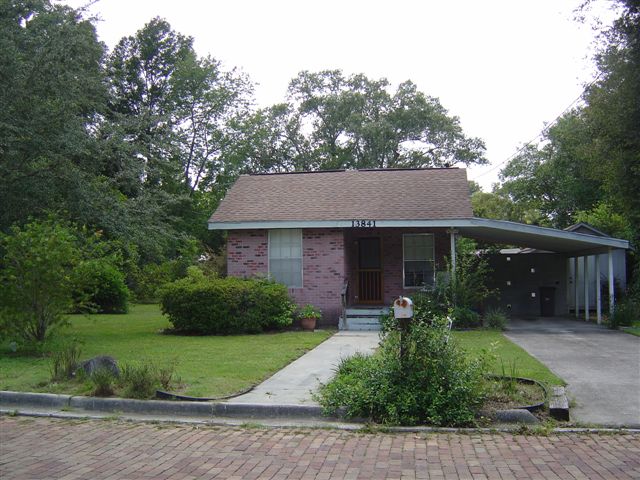 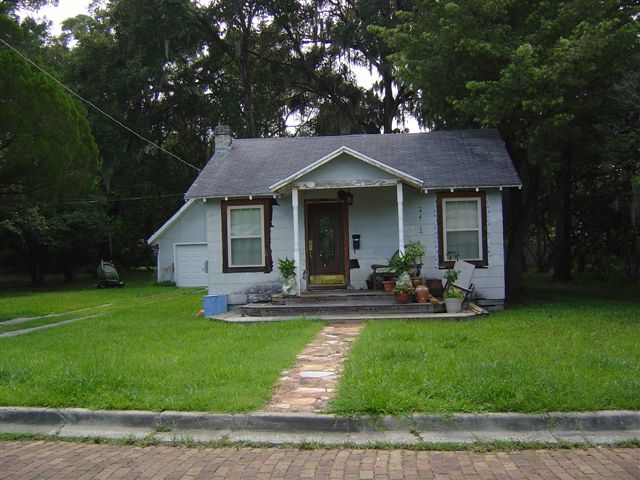 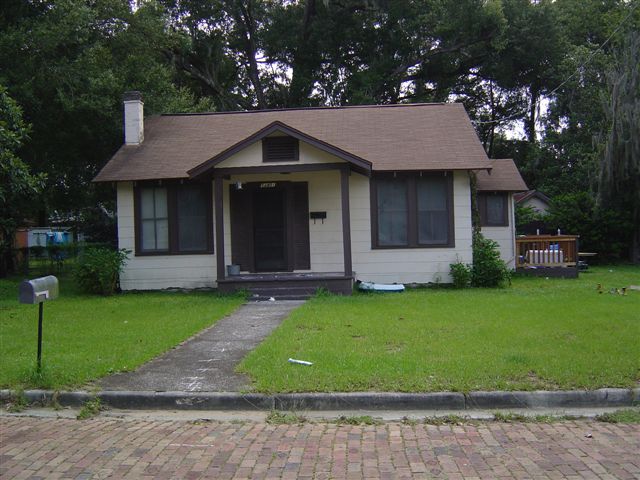 |
